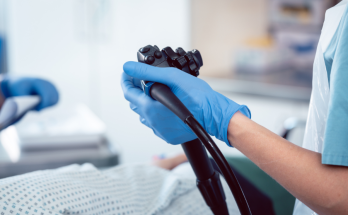Are you interested in transcranial magnetic stimulation, but wondering what it actually does? The information on this site will shed light on your curiosity. Personalized TMS involves a series of gentle magnetic pulses delivered to areas of your brain responsible for mood. It is a non-drug, awake treatment, and personalized to help represent your unique, personal pattern of symptoms so the treatment is meaningful to you.
How Personalized TMS Works
At its most basic level, TMS is a form of noninvasive brain stimulation. A small coil is placed on your scalp and sends pulses of energy to your mood network, which is often the dorsolateral prefrontal cortex (DLPFC). The sessions are outpatient and usually take less than an hour.
To know more about this, click this link at https://pmc.ncbi.nlm.nih.gov/articles/PMC8165195/.
Before your treatment begins, your team will map and personalize your details so the treatment is tailored to you. You will feel empowered as your treatment builds day by day:
-
Your clinician identifies your most effective target and treatment dose often by measuring your motor threshold to set a safe and personalized intensity.
-
You will be sitting comfortably in a chair while the coil sends pattern-generated pulses to your brain, there are no sedatives or anesthesia, and no discomfort or downtime.
-
Multiple treatment sessions over weeks will help train the mood circuits to reconnect and leverage your neuroplasticity – your brain’s ability to develop healthier connections.
Is TMS Right for Everyone?
TMS can help if you have major depressive disorder, especially if you are experiencing treatment-resistant depression when medications or therapy have not provided enough relief. It may also be an option for you if you are suffering from side effects from medications or you prefer non-systemic options.
You may have seen local providers like TMS Therapy Del Mar, California, and wondered if there may be a similar clinic near you that can help. What is most important is if you have a qualified team that can customize the plan.
TMS may not be for everyone. Certain metal implants in or near the head, or a history of having uncontrolled seizures may present safety issues. If you’re pregnant (or postpartum) or if anxiety has a significant presence, your clinician will consider these risks, potential benefits, and alternatives.
What Makes TMS “Personalized”?
Personalization begins with where and how you’re stimulated. Everybody’s brain is different, and your team may have to specifically direct the coil at the right place for stimulation and then choose the right intensity and pattern of stimulation.
Some clinics program the coil using imaging or EEG (see more here) guided targeting to pinpoint location; some simply adjust the angle and placement of the coil based on your anatomical features.
Your schedule may also be personalized. Frequency of visits, pulse patterns, and course length may all be adjusted based on your response. If you show improvement quickly, there may be a tapering of sessions; if you need more time, the plan may be extended. The aim is to make steady gains that last, buoyed by lasting neuroplastic changes.
Does It Actually Help With Depression?
Most people report clearer thinking, better sleeping, and more energy after they start treatments – though medications you are taking may also impact these, and the timeline varies. Some people notice that focus gets better first, and mood improves later. Most relief builds after the course ends.
-
Typical course consists of a frequency schedule of 4–6 weeks, having regular visits to get started, and then usually tapering down.
-
Side effects are rare, and the most common are mild – scalp tingling or a mild headache; these side effects often fade after the first few sessions.
-
For people who have not responded well to medications, response rates and remission rates have been significant.
-
If symptoms return (and they sometimes do), “booster” sessions can help refresh gains – making each booster worth the time without restarting from zero.
Comparing TMS With Other Treatments
Of course, medications work in the body, and studies have shown medications are often quite effective, particularly early on. Medications are relatively easy to engage and can be helpful for anxiety and sleep. Though some struggle with side effects such as weight gain, changes in weight, or sexual problems.
TMS is distinct because it directly impacts the brain, and not most systemic effects. However, it requires visits to the clinic.
Psychotherapy is meant to build skills and address root causes of mood disorders. Many people engage in TMS and psychotherapy simultaneously (it is possible TMS will help you organize and use new skills, while psychotherapy will promote maintenance or build of gains.)
For people with severe or urgent depression, other options (like ECT) may be faster, but require anesthesia and carry different risks. TMS is more gentle and targeted, requiring weeks to guide you on a steady and sustainable path upward.
Final Thoughts
If you are considering TMS, book a consult and be ready to provide your treatment history, goals, and questions. With adequate targeting of stimulation, and a schedule that works for your lifestyle, personalized TMS may assist your brain in shifting to healthier patterns – and back to feeling like you.



